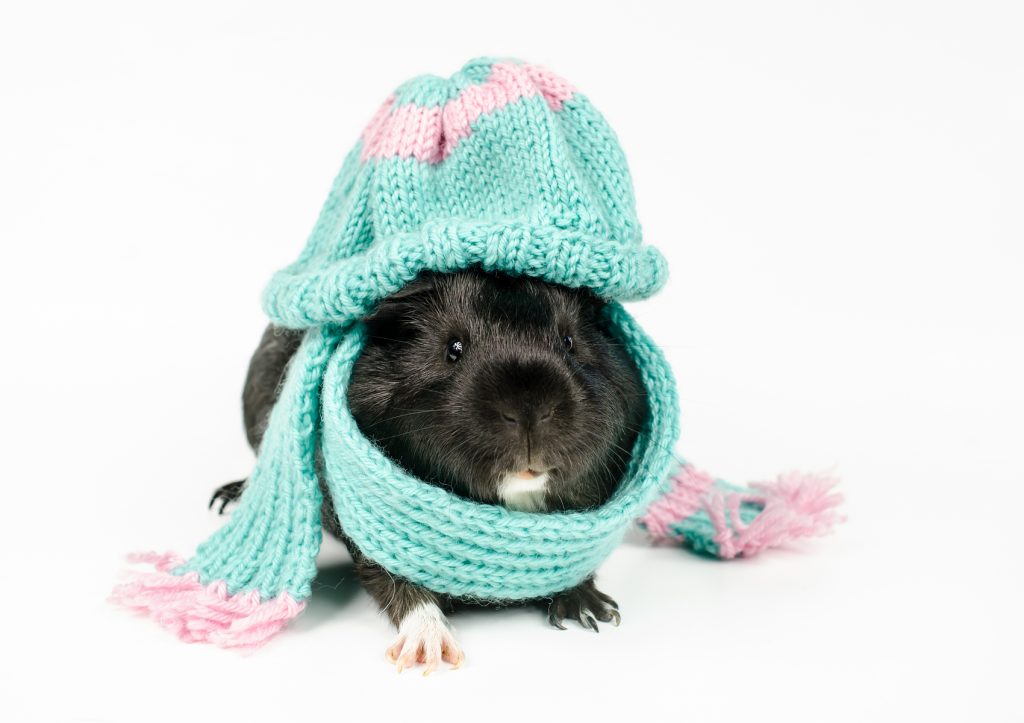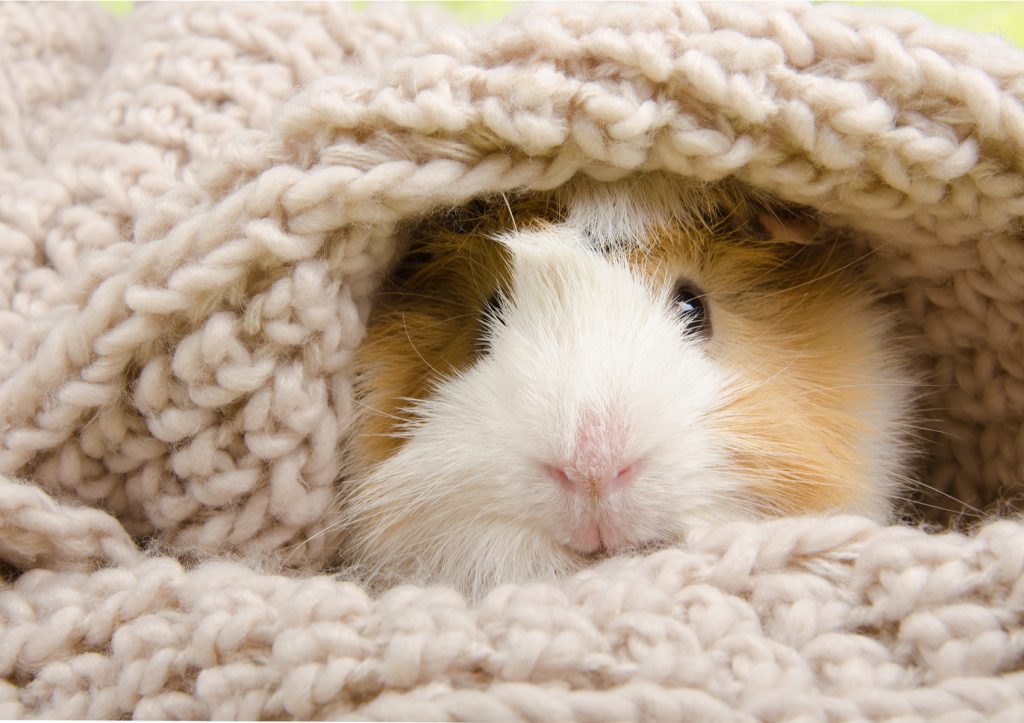Yes, guinea pigs get cold. Guinea pigs do the best in temperatures that are between 65 to 75 degrees Fahrenheit. Exposure to temperatures that are colder than this will cause your guinea pig to get cold.
How Do Guinea Pigs Regulate Their Temperature?
Guinea pigs are prefer milder temperatures as they can’t handle extreme temperatures in either direction. Guinea pigs regulate their temperature by increasing or decreasing blood flow to their skin.
When a guinea pig is in cold temperatures, their bodies decrease blood flow to their skin and concentrates the blood flow in their torso to ensure that their vital organs are warm.
What Temperature is Best for Guinea Pigs?
The best temperature range for your guinea pig is between 65 to 75 degrees Fahrenheit.
You should avoid exposing your guinea pig to temperatures that too hot or too cold. Extreme hot temperatures can cause your guinea pig to overheat, while extreme cold temperatures can cause hypothermia.
How to Tell If Your Guinea Pig is Cold?
Shivering
Even though guinea pigs cannot talk to us to tell us when they are cold, there are some signs that they exhibit which indicate that they are cold. One indicator that your guinea pig is cold is if they are shivering.
Shivering is a reflex that warm-blooded animals experience when the skeletal muscles involuntarily shake in small movements. This involuntary shaking is the body’s attempt to create warmth by expending energy. The heat that is generated from shivering is a byproduct of the increased muscular activity.
Curling Into a Ball (Huddling)
Curling in a ball can be another sign that your guinea pig is cold. Guinea pigs and other animals curl themselves into a “ball” when they are cold to minimize the amount of heat loss that their bodies experience.
The guinea pig’s body heat is lost through the surface area of their body that is exposed to the outside air. By curling into a ball, the guinea pig reduces the amount of surface area that is exposed to the outside air, therefore minimizing the amount of body heat that is lost.
Your Guinea Pig’s Ears Are Cold
Guinea Pigs use their ears to regulate their body temperature. Guinea pigs use their ears to do this by regulating the flow of blood from other parts of their bodies to their ear lobes.

When a guinea pig is cold, their body reduces the supply of blood to their ears and curls up their outer ears to reduce surface area and retain heat. Because their ears help to regulate body temperature, touching their ears can be a good way to gauge their temperature.
If you touch their outer ear and it is cold, this could be a sign that your guinea pig is cold.
Burrowing into Their Bedding
While a guinea pig may burrow into their bedding at other times besides when they are cold, this behavior can also indicate that they are cold. The bedding that we place in our guinea pig’s cages not only serves as a way to increase their comfort but can also serve as insulation. Insulation can help to provide warmth by reducing the amount of heat transfer and heat loss that occurs.
What Should You Do to Keep Your Guinea Pig Warm/Avoid Them from Getting Cold?
Location of the Cage
You can help to prevent your guinea pig form getting cold by being mindful of where you place your guinea pig’s cage. Placing your guinea pig’s cage under a window or next to a door that leads to the outside can cause your guinea pig to become cold.
If you must place your guinea pig’s cage in a location like this, try to make sure that no drafts of cold air are able to penetrate the window or door.
Add Bedding to Their Cage
As stated before, adding bedding to your guinea pig’s cage can help to keep them warm since the bedding acts as an insulator.
Adding Shelter to Their Cage
Adding shelter to their cage can also help to keep your guinea pig warm. By adding shelter, you give the guinea pig a location where they can go to conserve their body heat. Some good forms of shelter can be hidey houses, cozies, blankets or even hay.
Covering a Portion of the Cage
By covering a portion of the top of the cage with a blanket, you can increase the temperature of your guinea pig’s cage to prevent them from getting cold. Covering the cage will help to keep any cold air out while preventing the warm air from within their cage from escaping.
If you decide to cover your guinea pig’s cage, you should avoid covering the entire top of the cage to ensure that they have sufficient airflow to prevent them from the dangers of suffocating.
Use a Heat Lamp
Placing a heat lamp above your guinea pig’s cage can also help to keep them warm if you notice that they are getting cold. If you decide to place a heat lamp above their cage you should also consider placing a pet-safe thermometer into their cage to can monitor the temperature of their cage.
Just as exposing your guinea pig to temperatures that are too cold can injure them, exposing them to temperatures that are too hot can also cause them injury, so be sure to keep the heat lamp at a setting and distance which will not cause their cage to become excessively hot.
Conclusion
Guinea pigs can be delicate creatures and that extends to the temperatures they thrive best in. Prolonged exposure of temperatures below 65 degrees or temperatures above 75 degrees can cause a negative impact on your cavy. Since guinea pigs get cold easily, use the tips above to keep them a warm safe place to call home.

